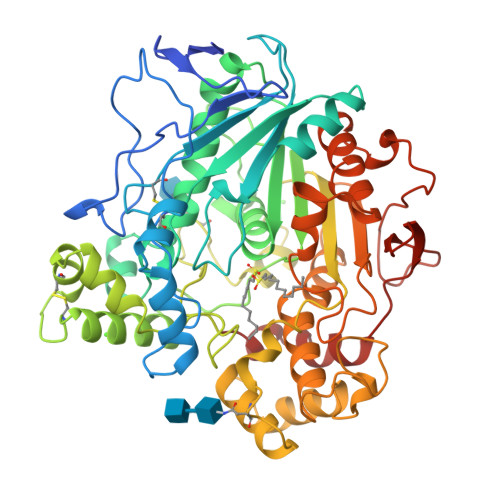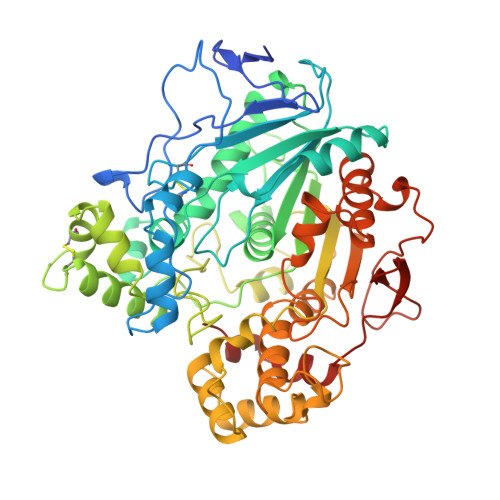Analogs of reaction intermediates identify a unique substrate binding site in Candida rugosa lipase.
Grochulski, P., Bouthillier, F., Kazlauskas, R.J., Serreqi, A.N., Schrag, J.D., Ziomek, E., Cygler, M.(1994) Biochemistry 33: 3494-3500
- PubMed: 8142346
- DOI: https://doi.org/10.1021/bi00178a005
- Primary Citation of Related Structures:
1LPN, 1LPO, 1LPP - PubMed Abstract:
The structures of Candida rugosa lipase-inhibitor complexes demonstrate that the scissile fatty acyl chain is bound in a narrow, hydrophobic tunnel which is unique among lipases studied to date. Modeling of triglyceride binding suggests that the bound lipid must adopt a "tuning fork" conformation. The complexes, analogs of tetrahedral intermediates of the acylation and deacylation steps of the reaction pathway, localize the components of the oxyanion hole and define the stereochemistry of ester hydrolysis. Comparison with other lipases suggests that the positioning of the scissile fatty acyl chain and ester bond and the stereochemistry of hydrolysis are the same in all lipases which share the alpha/beta-hydrolase fold.
Organizational Affiliation:
Biotechnology Research Institute, National Research Council of Canada, Montréal, Quebec.























